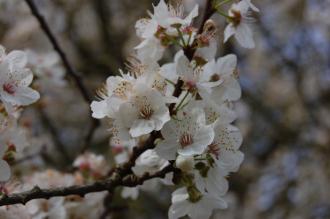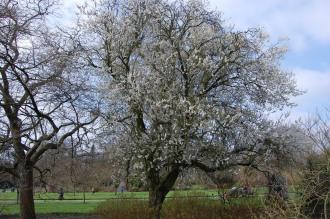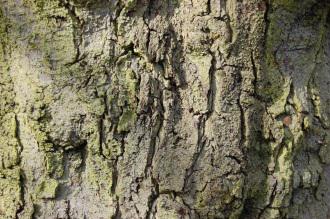
Prunus cerasifera flower (11/03/2012, Kew, London)
Position: Full Sun
Flowering period: Early spring
Soil: Moist, well drained
Eventual Height: 9m
Eventual Spread: 6m
Hardiness: 4b – 9b
Family: Rosaceae
Prunus cerasifera is a large shrub or small deciduous tree with a rounded (somewhat messy) habit. Its bright green leaves are up to 6cm long, alternate and simple with serrated margins, pointed tips. The bark is dark reddish brown and becomes fissured with age. The white flowers are fragrant, solitary, up to 2cm across and bloom before the leaves emerge. The edible fruit is a red or yellow drupe, is up to 3cm in diameter and matures in late summer.

Prunus cerasifera (11/03/2012, Kew, London)
Prunus cerasifera, commonly known as Cherry Plum and Myrobalan Plum, is native to parts of Europe and Asia. It is not native to the UK, although it has become naturalised, and was introduced into Britain about 300 years ago. This tree is often confused with Sloe or Blackthorn.
The etymological root of the binomial name Prunus is derived from the classical name for Plum. Cerasifera is derived from the Latin cerasi ‘cherry’ and fera ’wild’.
The landscape architect may find Prunus cerasifera useful as specimen tree, particularly in a wildlife garden or community garden. It is also suitable for planting as part of a mixed, wildlife friendly hedge.
Ecologically, P. cerasifera is attractive to early insects (including bees) for its nectar and birds which consume its fruit.

Prunus cerasifera bark (11/03/2012, Kew, London)
The Royal Horticultural Society has given the variety P. cerasifera ‘Nigra’ their prestigious Award of Garden Merit in 1993.
P. cerasifera prefers moist, fertile, well-drained soils. It tolerates most pH of soil. It will not tolerate waterlogged soils.
P. cerasifera requires little maintenance. If maintained as a hedge it should be cut in winter, outside of the bird nesting season.

